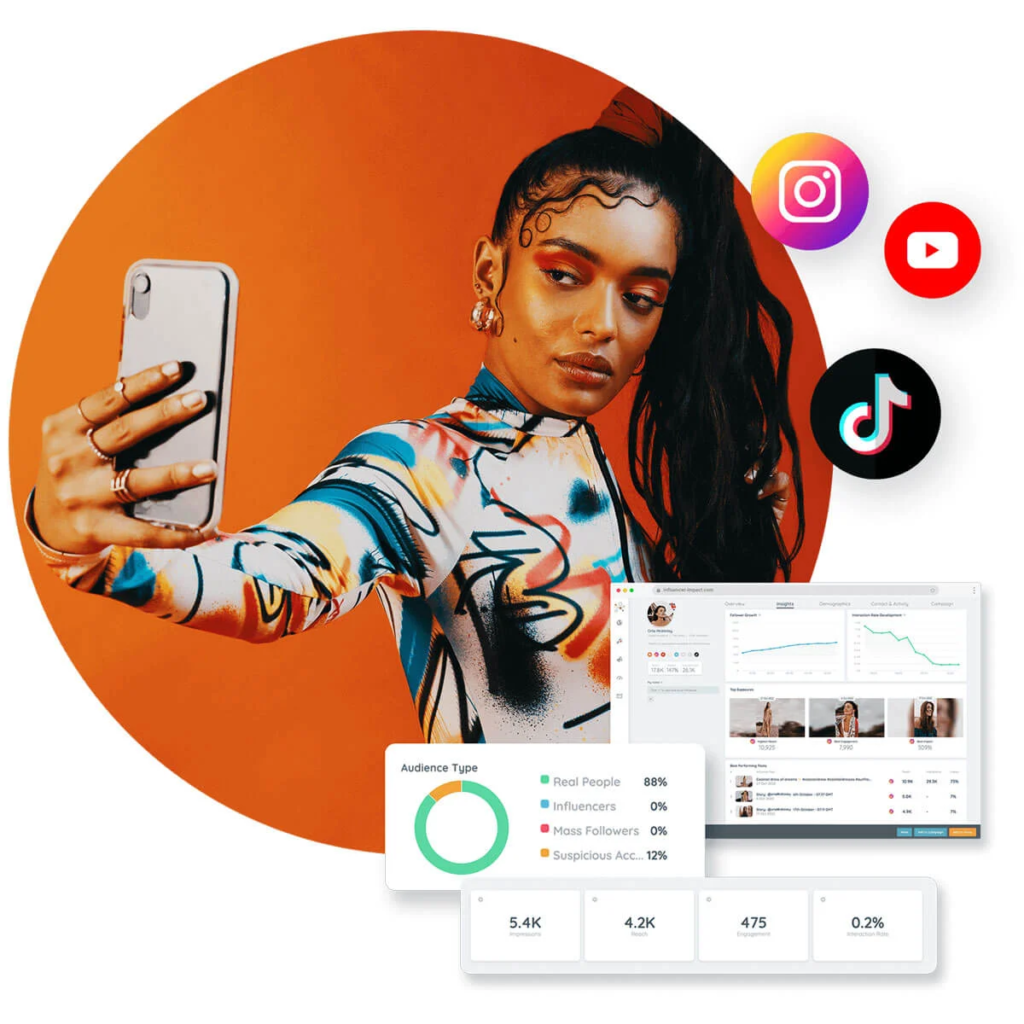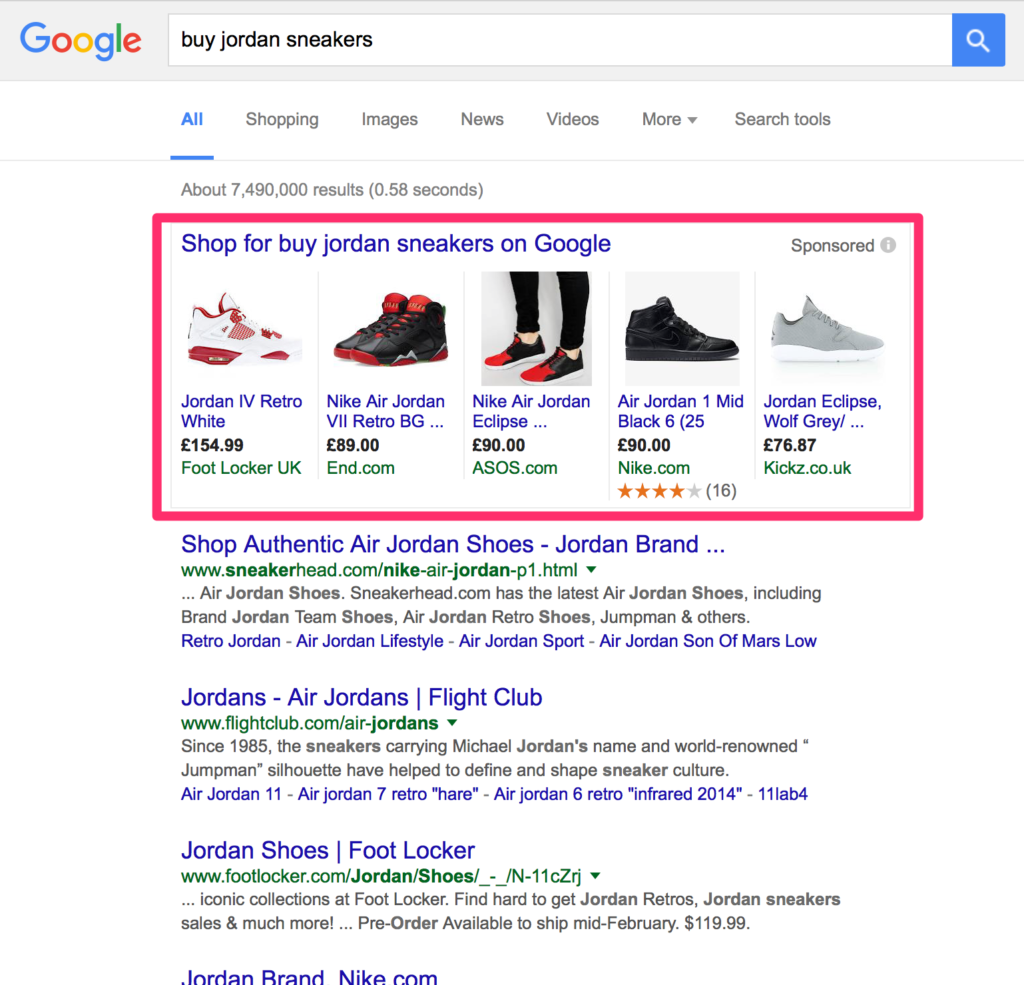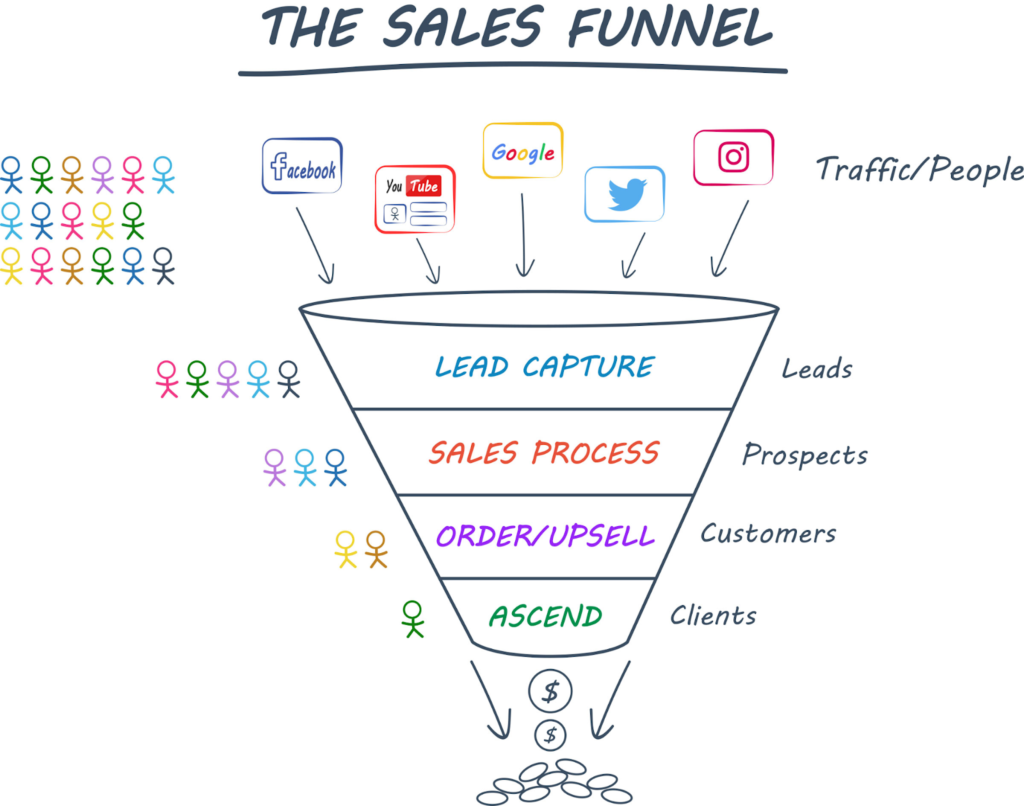The e-commerce industry has experienced tremendous growth over the years
As of my knowledge cutoff in September 2021, the global e-commerce market was estimated to be worth over $4.2 trillion. This includes business-to-consumer (B2C) e-commerce sales across various sectors such as retail, fashion, electronics, and more.
But, Conversion rates play a vital role in the success of any e-commerce business. It measures the percentage of website visitors who complete a desired action, such as making a purchase.
To maximize conversions, it’s crucial to employ effective strategies. In this blog, we will explore various organic and paid strategies that can help boost e-commerce conversion rates.
- Organic Strategies
Using organic strategies to boost e-commerce conversion rates involves optimizing various aspects of your online presence to attract, engage, and convert customers. Here are some key steps to leverage organic strategies effectively:
Enhance User Experience:

- Responsive Web Design: Ensure your website is mobile-friendly and provides a seamless experience across devices.
- Streamlined Navigation: Make it easy for users to find products and navigate your website with clear menus and search functionality.
- User-Friendly Checkout Process: Simplify the checkout process with a clear, intuitive interface and minimal form fields to reduce friction.
Implement Search Engine Optimization (SEO):

- Keyword Research and Optimization: Identify relevant keywords that your target audience uses to search for products. Incorporate these keywords naturally into your website content, including product descriptions, blog posts, and meta tags.
- Quality Content Creation: Develop valuable and engaging content that addresses customer pain points, provides solutions, and showcases your expertise. This can include blog articles, guides, tutorials, and videos.
- Optimized Product Descriptions: Write unique and compelling product descriptions that highlight key features, benefits, and use cases. Include relevant keywords to improve search engine visibility and attract organic traffic.
Leverage Social Media Engagement:

- Build a Strong Social Media Presence: Establish and maintain an active presence on social media platforms that align with your target audience. Regularly share engaging content, interact with followers, and respond to customer inquiries.
- Create Engaging Content: Develop visually appealing and shareable content such as product images, videos, user-generated content, and behind-the-scenes glimpses. Encourage user engagement through contests, polls, and interactive posts.
- Utilize Influencer Collaborations: Partner with influencers relevant to your industry or niche to promote your products. Their recommendations and endorsements can generate trust and drive conversions.
Maximize Email Marketing:

- Build a Quality Email List: Offer incentives such as discounts, exclusive content, or free resources to encourage visitors to subscribe to your email list. Ensure you provide value through personalized and relevant email content.
- Personalization and Segmentation: Segment your email list based on customer demographics, behavior, and preferences. Deliver targeted and personalized email campaigns that resonate with specific segments.
- Effective Call-to-Action (CTA): Use clear and compelling CTAs in your email campaigns to guide recipients to relevant landing pages or product pages. Encourage them to take action, such as making a purchase, signing up for a trial, or downloading a resource.
Optimize for Local SEO:

- Claim and Optimize Google My Business: Create and optimize your Google My Business profile, including accurate business information, photos, and customer reviews. This helps improve local search visibility and drives foot traffic to physical stores if applicable.
- Local Keyword Targeting: Incorporate location-specific keywords in your website content to attract local customers searching for products or services in their area.
- Online Reviews and Citations: Encourage customers to leave reviews on platforms like Google, Yelp, and industry-specific directories. Positive reviews and consistent business information across online directories help build trust and credibility.
By implementing these organic strategies, you can improve your e-commerce website’s visibility, engage with your target audience, and increase conversion rates.
- Paid Strategies

Paid strategies can be highly effective in boosting conversion rates for an e-commerce store
Pay-Per-Click (PPC) Advertising:

PPC advertising involves placing ads on search engines or advertising networks and paying for each click. It offers immediate visibility and can drive targeted traffic to your e-commerce store.
- Selecting the Right Keywords: Conduct keyword research to identify high-converting keywords relevant to your products. Use tools like Google Keyword Planner to find keywords with good search volume and moderate competition.
- Crafting Compelling Ad Copy: Write concise, compelling ad copy that highlights unique selling points, benefits, and offers. Use strong calls-to-action (CTAs) to encourage clicks.
- Optimizing Landing Pages: Create dedicated landing pages that align with your PPC ads. Ensure the landing page provides a seamless user experience, with clear product information, persuasive content, and a prominent CTA.
Display Advertising:

Display ads appear on websites, apps, or social media platforms, allowing you to reach a broader audience.
- Targeted Audience Selection: Utilize demographic, behavioral, or interest-based targeting to reach your ideal customers. Define specific audience segments based on their characteristics and preferences.
- Eye-Catching Visuals and Design: Create visually appealing and attention-grabbing ads that showcase your products or brand. Use high-quality images, engaging videos, and compelling ad designs.
- Retargeting Campaigns: Serve ads to users who have previously interacted with your website but did not convert. Implement retargeting pixels or cookies to track user behavior and show relevant ads to bring them back to your site.
Social Media Advertising:

Advertising on social media platforms allows you to target specific demographics, interests, or behaviors, and reach a highly engaged audience.
- Leveraging Platform-Specific Ad Formats: Utilize the unique ad formats offered by each social media platform. For example, Instagram Stories, Facebook Carousel ads, or Twitter Promoted Tweets.
- Precise Audience Targeting: Utilize the advanced targeting options available on social media platforms. Define your target audience based on demographics, interests, behaviors, or even lookalike audiences.
- A/B Testing and Optimization: Continuously test different ad variations, headlines, visuals, and CTAs to identify the most effective combinations. Optimize your campaigns based on performance metrics such as click-through rates (CTRs), conversions, and return on ad spend (ROAS).

Influencer marketing involves collaborating with popular social media influencers who have a dedicated following. They promote your products to their audience, leveraging their trust and credibility.
- Identifying Relevant Influencers: Research and identify influencers whose audience aligns with your target market. Consider their reach, engagement rates, and authenticity.
- Building Authentic Relationships: Establish genuine connections with influencers by understanding their content and values. Collaborate on creative campaigns that align with their audience’s interests and your brand.
- Monitoring and Measuring Campaign Performance: Track key metrics such as engagement, reach, conversions, and ROI to evaluate the effectiveness of your influencer marketing campaigns. Utilize tracking links and unique discount codes to measure the direct impact of influencer promotions.
Video Advertising:

Video ads have become increasingly popular, offering engaging and immersive experiences for users. Consider the following tactics:
- Platforms and Formats: Utilize platforms like YouTube or social media channels that support video ads. Experiment with different formats such as in-stream ads, pre-roll ads, or native video ads.
- Compelling Storytelling: Create videos that tell a compelling story about your brand or products. Highlight their features, benefits, and how they solve customer problems. Keep the videos concise and visually appealing to capture attention.
- Call-to-Action (CTA): Include clear and actionable CTAs in your videos, directing viewers to take the desired action, such as visiting your website, making a purchase, or subscribing to your newsletter.
Shopping Ads:

Shopping ads are specifically designed for e-commerce stores, displaying product information, images, and prices directly on search engine results pages (SERPs) or shopping platforms. Consider the following strategies:
- Product Feed Optimization: Ensure your product feed is accurate, complete, and optimized with relevant keywords, product titles, descriptions, and images. This helps search engines understand your products and display them to relevant users.
- Bidding and Budget Optimization: Continuously monitor and adjust your bidding strategy to maximize visibility and conversions while optimizing your budget. Adjust bids based on the performance of specific products or categories.
- Negative Keywords: Utilize negative keywords to prevent your ads from displaying for irrelevant searches, improving the quality and relevance of the traffic you attract.
Remarketing Campaigns:

Image Source : Wakeupdata
Remarketing allows you to target users who have previously visited your website or shown interest in your products but did not convert. Consider the following techniques:
- Dynamic Remarketing: Show personalized ads featuring the specific products or product categories that users previously viewed on your website. This provides a highly relevant and tailored ad experience.
- Abandoned Cart Remarketing: Target users who added items to their cart but did not complete the purchase. Remind them of the items they left behind and offer incentives such as discounts or free shipping to encourage conversion.
- Sequential Remarketing: Create a sequence of ads that target users at different stages of the conversion funnel. Start with a general awareness ad, then retarget with more specific product ads, and finally, offer a compelling incentive to convert.
Affiliate Marketing:

Image Source : Authority Hacker
Affiliate marketing involves partnering with affiliates or publishers who promote your products on their platforms. You pay a commission for each referred sale. Consider the following steps:
- Affiliate Program Setup: Create an affiliate program with clear guidelines, a commission structure, and promotional materials. Use affiliate networks or platforms to manage your program and recruit affiliates.
- Affiliate Selection: Identify relevant affiliates in your industry or niche who have a loyal audience and can effectively promote your products. Screen potential affiliates based on their reach, engagement, and alignment with your brand values.
- Performance Tracking and Optimization: Implement proper tracking mechanisms to attribute sales to specific affiliates. Continuously monitor the performance of your affiliates and provide support, resources, and incentives to encourage their success.
- Here is how to use paid ads to increase conversions for your e-commerce store:

Image Source: LaptrinhX
Step 1: Set Clear Conversion Goals:
Define specific conversion goals for your e-commerce store. Is it to increase purchases, sign-ups, or downloads? Having clear objectives will help you design effective ad campaigns and measure success accurately.
Step 2: Identify Your Target Audience:
Understand your target audience’s demographics, interests, and behaviors. This information will help you select the right ad platforms, craft compelling ad messaging, and target your ads effectively.
Step 3: Select the Right Ad Platforms:
Identify the ad platforms that are most relevant to your target audience. Popular options include Google Ads (Search, Display, Shopping), social media platforms (Facebook, Instagram, Twitter), and content discovery networks (Taboola, Outbrain). Consider the nature of your products and where your audience is most likely to be present.
Step 4: Develop Engaging Ad Creative:
Create visually appealing and compelling ad creative that grabs attention and entices users to take action. Use high-quality images or videos, compelling headlines, and clear CTAs. Align the ad creative with your brand identity and messaging to ensure consistency.
Step 5: Define Targeting Parameters:
Utilize the targeting options provided by the ad platforms to reach your ideal audience. Set parameters such as demographics, interests, location, and behaviors to narrow down your target audience. Leverage advanced targeting options like custom audiences, lookalike audiences, or remarketing to further refine your targeting.
Step 6: Set Budget and Bidding Strategy:
Determine your advertising budget based on your overall marketing goals and financial resources. Allocate your budget wisely across platforms and campaigns. Choose the appropriate bidding strategy, such as cost-per-click (CPC), cost-per-thousand-impressions (CPM), or conversion-based bidding, based on your objectives.
Step 7: Optimize Landing Pages:
Ensure that your landing pages align with your ad messaging and provide a seamless user experience. Optimize them for conversion by including persuasive product descriptions, clear CTAs, and trust-building elements such as customer reviews or testimonials.
Step 8: Track and Analyze Performance:
Implement conversion tracking on your website to measure the effectiveness of your ad campaigns. Track key metrics such as click-through rates (CTR), conversion rates, average order value (AOV), and return on ad spend (ROAS). Use the data to identify underperforming campaigns or ad variations and make data-driven optimizations.
Step 9: Test & Analyze
Continuously test different ad variations, audience segments, targeting parameters, and landing page elements. Conduct A/B tests to identify the best-performing combinations. Iterate and refine your campaigns based on the insights gained from the data.
Step 10: Monitor and Optimize:
Regularly monitor your ad campaigns’ performance, making adjustments as needed. Optimize your campaigns by scaling successful ones, pausing underperforming ones, and allocating resources where you see the highest returns.


